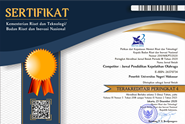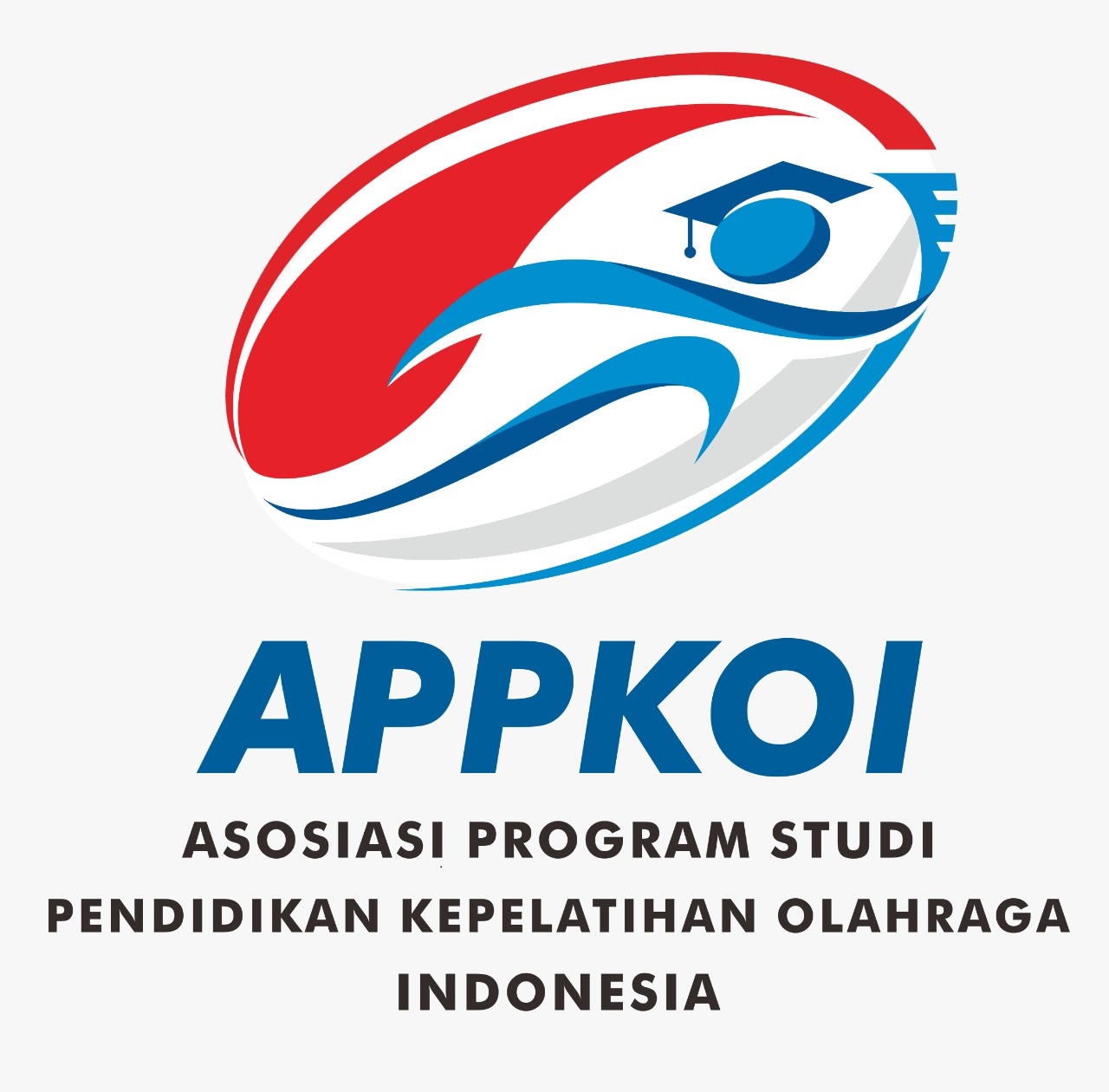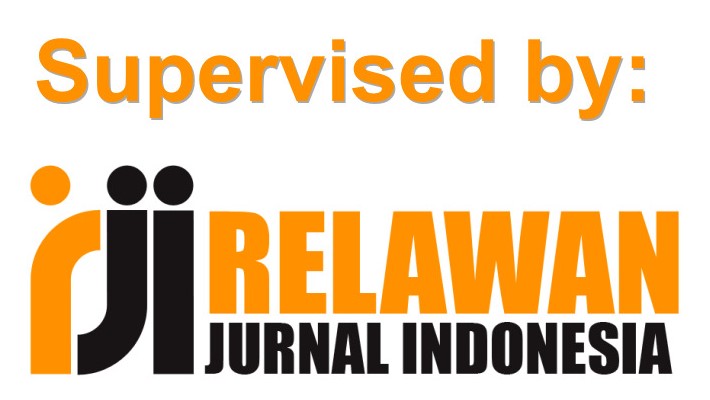How Many Calories Does Physical Activity Require for Physical Education College Students?
(1) Universitas Muhammadiyah Sukabumi
(2) Universitas Muhammadiyah Sukabumi
(3) Universitas Pendidikan Muhammadiyah Sorong
(4) Universitas Pendidikan Muhammadiyah Sorong
(5) Universitas Muhammadiyah Sukabumi
(*) Corresponding Author
DOI: https://doi.org/10.26858/cjpko.v15i2.45763
Abstract
Keywords
Full Text:
PDFReferences
Blair, Steven N.; Horton, Edward; Leon, Arthur S.; Lee, I-Min; Drinkwater, Barbara L.; Dishman, Rod K.; Mackey, Maureen; Kienholz, Michelle L.. Physical activity, nutrition, and chronic disease. Medicine & Science in Sports & Exercise 28(3):p 335-349, March 1996.
Budiwanto, S. (2017). Metodologo Penelitian dalam Keolahragaan. UM penerbot & Percetakan.
Burhaein, E., & Saleh, M. (2017). Optimalisasi Pengaturan Gizi Dan Aktivitas Olahraga Untuk Mengatasi Obesitas Anak Tunagrahita. Seminar Nasional Gizi, 11–21.
Canli, U., & Samar, E. (2022). Exploring the effect of physical activity level on balance, aerobic performance and cognitive function in young sedentary individuals. Journal of Physical Education and Sport, 22(10), 2504–2512. https://doi.org/10.7752/jpes.2022.10318
Creswell, J. W., & Creswell, J. D. (2018). Research Design Qualitative, Quantitative, and Mixed Methods Approaches. In SAGE Publications.
Crowley, J., Ball, L., & Hiddink, G. J. (2019). Nutrition in medical education: a systematic review. The Lancet Planetary Health, 3(9), e379–e389. doi:10.1016/s2542-5196(19)30171-8
Gibney, M.J., Forde, C.G. Nutrition research challenges for processed food and health. Nat Food 3, 104–109 (2022). https://doi.org/10.1038/s43016-021-00457-9
Igwenagu, C. (2016). Fundamentals of research methodology and data collection: Enugu State University of Science and Technology.
Irianto, D. P. (2007). Panduan Gizi Lengkap Keluarga dan Olahragawan. CV. Andi Offset.
James, W.P.T., Ralph, A., Ferro-Luzzi, A. (1989). Energy Needs of the Elderly. In: Munro, H.N., Danford, D.E. (eds) Nutrition, Aging, and the Elderly. Human Nutrition, vol 6. Springer, Boston, MA. https://doi.org/10.1007/978-1-4899-2537-4_6
Kemenkes. (2017). Ayo Bergerak Lawan Obesitas. In Kementrian Kesehatan Republik Indonesia (p. 37). http://p2ptm.kemkes.go.id
Kolokoltsev, M., Ambartsumyan, R., Romanova, E., Vorozheikin, A., Torchinsky, N., Dudchenko, P., & Tarasov, A. (2022). Physical activity characteristics of female students with various diseases. Journal of Physical Education and Sport, 22(2), 455–461. https://doi.org/10.7752/jpes.2022.02057
MB, A. (2010). Buku Ajar Ilmu Gizi: Gizi dalam daur kehidupan (2nd ed.). EGC.
Mitchell, J. H., Haskell, W. L., & Raven, P. B. (1994). Classification of sports. Journal of the American College of Cardiology, 24(4), 864–866. https://doi.org/10.1016/0735-1097(94)90841-9
Saleh, M. (2019). Latihan dan aktivitas fisik untuk meningkatkan kesejahteraan psikologis. Journal Power Of Sports, 12–22(9), 1689–1699. http://e-journal.unipma.ac.id/index.php/JPOS/article/ View/4005
Saputro, W. A., & Fidayani, Y. (2020). Analisis Faktor-Faktor Yang Mempengaruhi Angka Kecukupan Energi Rumah Tangga Petani Di Kabupaten Klaten. Vigor: Jurnal Ilmu Pertanian Tropika Dan Subtropika, 5(2), 51–55. https://doi.org/10.31002/vigor.v5i2.3039
Sharkey, B. J. (1990). Fitness and health: Fourth Edition. In Human Kinetics.
Sugiyono. (2017). Metode Penelitian Kuantitatif, Kualitatif, dan R&D. Bandung : Alfabeta, CV.
Welis, W., & Rifki, M. S. (2013). Gizi untuk Aktifitas Fisik dan Kebugaran. In Sukabina Press
Westerterp, K.R. Assessment of physical activity: a critical appraisal. Eur J Appl Physiol 105, 823–828 (2009). https://doi.org/10.1007/s00421-009-1000-2
WHO. (2022). Physical activity. October, 1–9.
Widdowson, EM (1983). Berapa Banyak Makanan yang Dibutuhkan Manusia? Evaluasi Kebutuhan Energi Manusia. Dalam: Mauron, J. (eds) Kecukupan Gizi, Ketersediaan dan Kebutuhan Gizi. Experientia Supplementum, vol 44. Birkhäuser, Basel. https://doi.org/10.1007/978-3-0348-6540-1_2
Wiley, J., & Son. (2022). Sport and Exercise Nutrition. In Nucl. Phys. (Vol. 13, Issue 1). Wiley-Blackwell is.
Williams, M. H., Rawson, E. S., & Branch, J. D. (2017). Nutrition for Health, Fitness, & Sport. In McGraw-Hill Education.
Article Metrics
Abstract view : 237 times | PDF view : 113 timesRefbacks
- There are currently no refbacks.
Copyright (c) 2023 Muhammad Saleh

This work is licensed under a Creative Commons Attribution 4.0 International License.
COMPETITOR IS LICENSED BY :
 COMPETITOR is licensed under a Creative Commons Attribution 4.0 International License.
COMPETITOR is licensed under a Creative Commons Attribution 4.0 International License.
COMPETITOR EDITORIAL LOCATION :
![]() Kampus FIK Banta Bantaeng, Jalan Wijaya Kusuma Nomor 14, Rappocini, Makassar, Postal Code 90222
Kampus FIK Banta Bantaeng, Jalan Wijaya Kusuma Nomor 14, Rappocini, Makassar, Postal Code 90222
COMPETITOR IS INDEXED BY















